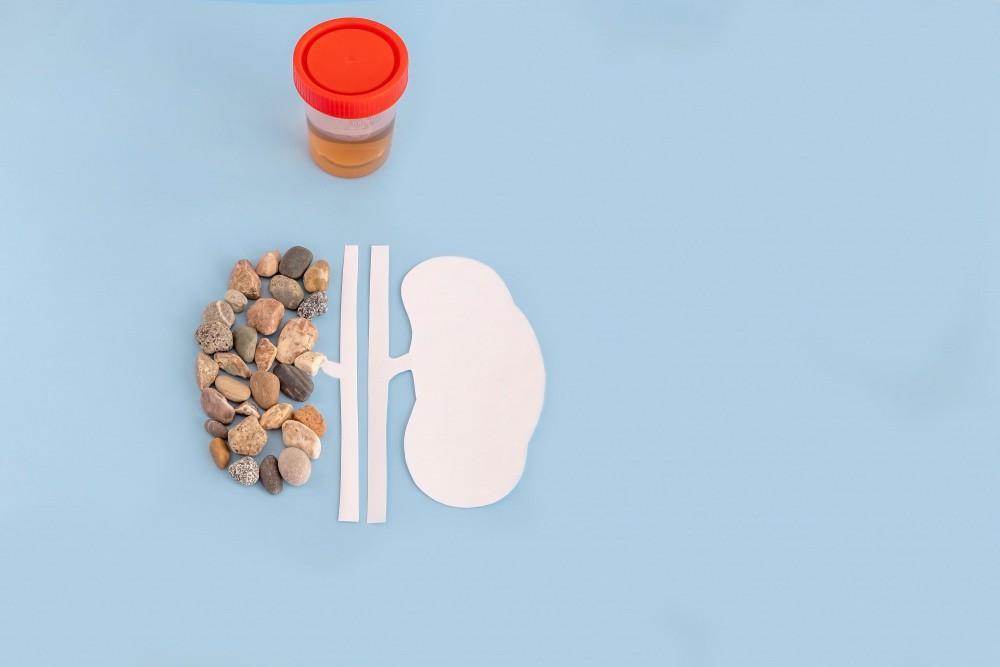
Remedying Painful Kidney Stones

Kidney stones are a common and extremely painful problem affecting millions of Americans during their lives. While tiny stones may pass through your urinary tract without issue, larger stones can get “stuck” inside the tract, refusing to pass, causing excruciating pain.
Whether you’ve had one kidney stone or several, you definitely want to know what you can do to reduce those painful symptoms in case a stone forms in the future. In this post, Alfred Shtainer, MD, FACS, and the team at Adult and Pediatric Urology offer some helpful tips.
Kidney stone basics
Your kidneys are your body’s filters, working to remove excess fluids and waste products, like excess minerals and salts, from your blood. Your body eliminates these wastes and fluids through your urine.
Kidney stones form when minerals in your urine bind together, forming small, hard concretions that can range in size from a grain of sand to a large pebble — sometimes even larger. Most kidney stones are made up of excess calcium, but other minerals can form stones, too.
Kidney stones cause a range of symptoms, like:
- Sharp, severe pain in your side or back
- Cloudy or foul-smelling urine
- Pain during urination
- Problems urinating
- Nausea and vomiting
Symptoms tend to lessen when the stone is at rest and worsen as the stone moves through the urinary tract.
Managing painful kidney stones
If you think you have a kidney stone, you should call our office right away for priority treatment. Until your visit, these steps can help reduce your pain.
Drink plenty of water
Drinking water or other non-caffeinated and nonalcoholic drinks is one of the best ways to flush a kidney stone out of your system. That’s because when you drink fluids, you urinate more often, and urinating helps move the stone and, hopefully, remove it from your body.
Take over-the-counter pain relievers
Ibuprofen, acetaminophen, and other over-the-counter pain relievers help relieve mild to moderate discomfort. For more severe pain, Dr. Shtainer may prescribe stronger medicines.
Change your position
Depending on your anatomy and where the stone is located, you might feel more comfortable lying down, sitting up, or even walking around or shifting positions. Try different positions to see if your pain reduces.
Try a heating pad
Using a heating pad on your lower back or flank helps relieve pain caused by muscle spasms associated with kidney stones. In some instances, relaxing your muscles may help the stone move so it can flush out through your urine.
Medical treatment is key
If you have a kidney stone, you need prompt medical treatment to protect your kidneys and prevent serious complications. Even small stones that may pass on their own should still be evaluated medically.
For smaller stones, medications may help. Some medicines help relieve pain until the stone passes naturally, while others relax your muscles, making it easier for the stone to move through your urinary system. Drinking plenty of fluids is also important for these smaller stones.
For larger stones, stones that won’t move, or stones causing severe symptoms, like infection or kidney issues, Dr. Shtainer may recommend a minimally invasive treatment, like shockwave therapy or laser treatment to break up the stone into smaller pieces, allowing them to pass through your urinary tract. Less commonly, very large stones or complicated cases may require surgery to remove the stone.
Don’t ignore your symptoms
Even relatively mild kidney stone symptoms need to be medically evaluated to prevent complications and, ideally, learn ways to prevent stones in the future. To learn more about kidney stone treatment and prevention, request an appointment online or over the phone with Dr. Shtainer and the team at Adult and Pediatric Urology in Manhattan, Brooklyn, and Queens, New York, today.
You Might Also Enjoy...


3 Problems Associated with Ejaculatory Pain

I Think I Have an STD: What Should I Do?

Finding the Right Urologist: Tips for Choosing the Best Care for Your Family

Did You Know A Urologist Can Help Decrease the Size of Your Prostate with a Fast In-Office Procedure

